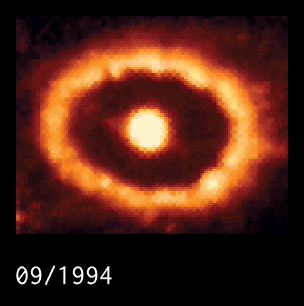apodviewer wrote:Please tell me how we know that there was a supernovae in "modern" times in the LMC. It is 160,000 light years away. Light must have taken that long to get here from there. Hence we could not know about anything going on there more recently that 160,000 years. Do you define this as" modern" times? I really want to know the answer.

Nothing can travel faster than light. Nothing. And everything we can know about space we know because we detect signals that have travelled here at the speed of light.
What happened on the Moon a second ago? Could it have been hit by a large meteor, which caused a flash of light as it hit the ground? We can't know until the next second.
What is happening at the outer layers of the Sun "now"? Has there just been a tremendous solar eruption "now"? We can't know until after eight minutes. Well, can't we send a satellite and place it in a moderately tight orbit around the Sun? It could see a solar eruption before we can. And then it could send a message to us and tell us about it so that we would know about it sooner, right? Wrong. Because the message from the satellite still can't travel our way faster than the speed of light. We still wouldn't know about the solar eruption until its effects actually hit us.
What is happening at the Orion Nebula "now"? All we have is some information about the Orion Nebula's status some 1,500 years ago. What do we know about the Andromeda Galaxy? Any information we have about that galaxy is two million years old.
That's spacetime for you. You either accept it and take an interest in what we
can know, because we detect signals that have been travelling our way at the speed of light. Or else you conclude that we don't know anything about any object in space outside the solar system "now", and then you may choose to stop taking an interest in astronomy altogether.
It's up to you, but don't complain when others still find outer space fascinating.
Ann
 The Large Cloud of Magellan
The Large Cloud of Magellan